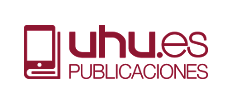Graphic Organizers: Mind Maps as a tool to enhance Reading Comprehension skills
Keywords:
Abstract
Reading comprehension in L2 is perhaps the skill whose requirements have changed most and most rapidly due to the demand of the information society. Readers not only need to interpret words and sentences in articles or books: sometimes they have to make a meaning out of disconnected pieces of information in pouring messages on websites, and social networks. The purpose of the present study is to explore the possibilities of mind-mapping techniques in order to foster the reading comprehension abilities in students of English as L2 by working under the assumption that the latter can be improved when apparently loose pieces of written information are connected by means of images and lines. The experiment in the project involved a total of 84 participants of two consecutive academic levels: first and second year of post-compulsory secondary education. Different sessions and two parallel procedures were scheduled in order to provide us with contrasting data that could be systematized numerically. Even though the sessions that could be scheduled were limited in number, the analysis of the data suggests some noticeable improvement in the reading comprehension abilities in most participants and some perception of progress in a majority of them. Their positive feedback, suggests that sustained work in this field could improve their reading comprehension skills in a significant way.
Downloads
Altmetrics
References
Armbruster, B.& Anderson, T.H. (1980). The Effect of Mapping on the Free Recall of Expository Text.Technical Report, 160. Urbana, IL: University of Illinois, Center for the Study of Reading. Retrieved from: https://www.ideals.illinois.edu/bitstream/handle/2142/17929/ctrstreadtechrepv 01980i00160_opt.pdf?sequence=1
Bernhardt, E.B. (2011). Understanding Advanced Second Language Reading. New York: Routledge.
Ellis, N. (2015) Implicit and Explicit Language Learning: Their Dynamic Interface and Complexity.Patrick Rebuschat (Ed.). Implicit and explicit learning of languages. Amsterdam: John Benjamins. 3-23. Retrieved from: http://www-personal.umich. edu/~ncellis/NickEllis/Publications_files/Implicit_AND_Explicit_Learning_EllisPreprint.pdf
Fernández Corbacho, A. (2021). Aprender a leer en una lengua extranjera en educación primaria. Huelva: Servicio de Publicaciones Universidad de Huelva
Foncubierta, J.M.; Machancoses, F.H.; Fonseca-Mora, M.C. La competencia lectora del alumnado universitario en contexto AICLE. Porta Linguarum, Monográfico III: 75-88 (2018). [http://hdl.handle.net/10481/54302]
Goodnough, K. and Woods, R. (2002), ‘Student and Teacher Perceptions of Mind Mapping: A Middle School Case Study’. Paper presented at the Annual Meeting of American Educational Research Association, New Orleans, 1st to 5th April 2002.
Grabe, W. (2009). Reading in a Second Language. Cambridge: CUP.
Grabe, W. and Stoller, F. (2002).Teaching and researching reading. London: Longman.
Hulstijn, J.H (2007) Psycholinguistic Perspectives on Language and its Acquisition. Cummins, J. and Davison, C. (Eds.) International Handbook of English Language Teaching. New York: Springer.
Jain, S. (2015) The Comprehensive Study of how Mind Mapping Technique Helps to Understand Concepts and Ideas in Science Teaching. International Journal of Scieentific and Research Publications, Volume 5, 12, December 2015 284 ISSN 2250-3153 www.ijsrp.org.
Koda, K. (2008) Impacts of prior literacy experience on second language learning to read. Koda, K. and Zehler, A.M. (Eds.) Learning to Read Across Languages:Cross-Linguistic Relationships in First- and Second-Language Literacy Development. London: Routledge, pp.68-96.
Link, S. (2008). Graphic Organizers.Research Starters.Academic Topic Overviews.Retrieved fromhttp://www.dswleads.com/Ebsco/Graphic%20Organizers.pdf.
Logan, G. (1997). Automacity and Reading: Perspectives from the Instance Theory of Automatization. Reading and Writing Quarterly, 13: 2, 123-146. DOI: 10.1080/ 1057356970130203. Retrieved from http://dx.doi.org/10.1080/1057356970130203.
Logan, G. (1990). Repetition priming and automaticity: Common underlying mechanisms? Cognitive Psychology, 22, 1-35. Retrieved from: http://www.psy.vanderbilt.edu/faculty/logan/1990Logan CP.pdf.
Mezo, T. & Vallejo, R. A. (1999) Stories for the Mind and Soul. Mexico DF: International Thomson Publishing.
Novoa, P., Cancino, R., Flores, W., Nieto, J., Venturo, C. (2018). The Harmonic Mind Map in the Comprehension of Narrative Texts in University Students. Propósitos y Representaciones, Jul.-Dec. 2018, Vol. 6, Nº 2: pp.541-606. http://dx.doi.org/10.20511/pyr2018.v6n2.243
OECD (2015) PISA Assessment. Available at http://www.educacionyfp.gob.es/inee/evaluaciones- internacionales/pisa/pisa-2015.html
OECD (2018) PISA 2018 Reading Literacy Framework. Available at http://www.educacionyfp.gob.es/ inee/dam/jcr:49ede102-244b-4acb-b28e-a7978d9883ed/ReadingFramework.pdf
OECD (2018) Preparing our Youth for an Inclusive and Sustainable World. The OECD PISA global competence framework. Available at http://www.educacionyfp.gob.es/inee/dam/jcr: 3c539272-6f4f-41f7-ac04-dd930d541bdf/Handbook-PISA-2018-Global-Competence.pdf
Ralston, J. and Cook, D. (2007).Collaboration, ICT and Mind Mapping.Reflecting Education, Vol. 3, No. 1, pp 61-73.
Rickheit, G., Schnotz, W. &Strohner, H. (1985).The Concpt of Inference in Dicourse Comprehension.Inferences in Text Processing.Rickheit, G. &Strohner, H. (Eds.). Amsterdam: Elsevier Science Publishers B.V.
Rumelhart, D. E. (1980). Schemata: The building blocks of cognition. R. J. Spiro, B. C. Bruce, & W. F. Brewer (Eds.), Theoretical issues in reading comprehension. Hillsdale, N.J.: Erlbaum.
Rumelhart, D.E. and Ortoni, A. (1977).The Representation of Knowledge in Memory. Retrieved from http://www.cs.northwestern.edu/~ortony/Andrew_Ortony_ files/ 1977-02%20-%20Rumelhart-

By submitting a proposal, the author agrees to the following terms:
- a) The author retains the authorship rights, granting the journal the right of first publication of the work.
- b) The texts will be disseminated with the Creative attribution license Commons 4.0. BY that allows you to share, copy and redistribute the material in any medium or format, as well as adapt, remix, transform and build on the material for any purpose, including commercially.







